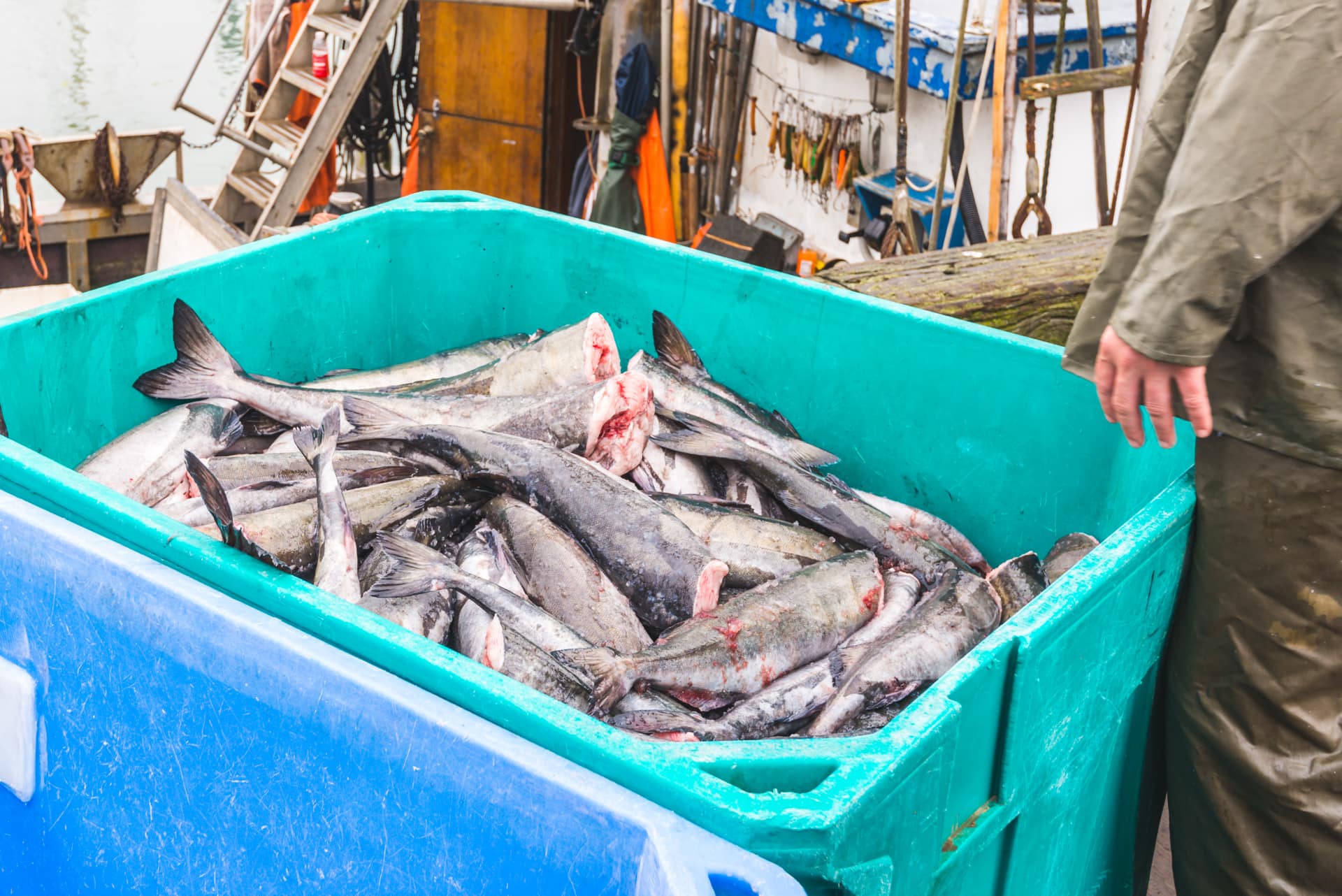
In a new study co-led by Wild Orca’s Dr. Giles, scientists examined all the recorded instances of porpoise harassment, known as “phocoenacide”, by the Southern Resident killer whales over the last five decades to understand more about this behavior and narrow the list of plausible explanations.
What was the study?
The researchers analyzed 78 individual reported occurrences of porpoise harassment by the Southern Resident killer whales in the Salish between 1962 and 2020.
These incidents, resulting in 28 porpoise deaths, usually featured a single porpoise, but in two instances, five to 15 porpoises. Similarly, while harassment tended to involve a small group of whales or even a single whale, three interactions featured between 15 and 25 individuals. Harassment episodes could be over in a few minutes but may last for hours, including long after the death of the porpoise.
The study sought to answer two essential questions:
First, what did the evidence show that could support or negate the most likely drivers of this behavior?
Secondly, did the evidence support a cultural change in behavior within this fish-eating killer whale population?

A harbor porpoise is carried by two J Pod Southern Resident killer whales during an encounter in July of 2022.
What did they find?
The evidence supported three potential drivers of porpoise harassment while ruling out several others, including male aggression, prey competition, and pod protection.
The “play” hypothesis
The research concluded that these events showed that “porpoise harassment by Southern Resident killer whales is consistent with the definition of play.” That is, “the behavior does not contribute to immediate survival; it is spontaneous yet intentional and pleasurable.”
The study found that “play” was often associated with juveniles, which might be expected given that it “is thought to be developmentally significant.”
However, whales of all ages were involved, often “acting in cooperation with one another” as they manipulated and passed the porpoise between them as if playing a game to keep the porpoise out of the water.
This cooperative technique was demonstrated in a 2022 incident documented on camera by Wild Orca. While multiple animals were also involved in this event, one juvenile, J53 Kiki, aged 6, was an extremely active participant and retrieved and retained the porpoise once deceased.
In fact, researchers noted that continuing to engage with a porpoise after death indicated that “the killing of the porpoise was not the goal,” thus further supporting the play hypothesis.
The hunting hypothesis
Is harassment of porpoises a form of hunting practice for Southern Resident killer whales?
When examining the ages of whales involved in porpoise harassment, the group least likely to participate were the post-reproductive females—the most experienced hunters. Reproductive females and their youngsters were more likely to be involved in porpoise harassment, perhaps indicating hunting practice and learning.
Also supporting the hunting hypothesis was the size of the porpoise. While adult harbor porpoises may grow to 6 feet, the juvenile or newborn porpoises most often targeted in these events are similar in size to adult Chinook salmon, the most important species in the Southern Resident killer whales’ diet.
Are these porpoises then target practice for salmon hunting? The study proposed that “chasing the porpoise and manipulating it or positioning it in one’s mouth could have practical benefits for coordination or strengthening a whale’s physical condition and might indirectly improve the skills required for successful hunting.”
Caring for the sick, injured, or deceased
In 2018, J35 Tahlequah carried her deceased calf for 17 days over 900 miles. While this feat was unique, this behavior is not. Over the past five decades of study, other females in this population have been observed lifting or carrying their sick or deceased calves, sometimes assisted by other pod members.
As this behavior is strikingly similar to how they “handle” porpoises, scientists proposed that this “altruistic behavior” to help a sick, injured, or deceased animal is perhaps misplaced when applied to this other species. This is known as “displaced epimeletic behavior.” Indeed, these recorded events show that many females of reproductive age have taken part in these misplaced mothering behaviors with porpoises.
Cultural transmission
The earliest recorded instances of porpoise harassment in the Salish Sea involved only L Pod, and the behavior “was later spread to or was adopted by K and [then] J Pod.” Three recorded incidents have since involved whales from two of the three pods.
The research shows that this behavior is seemingly passed down the family line—known as a matriline; from the matriarch through her daughters and her offspring via “social learning,” witnessing, and copying behaviors.
In fact, seven matrilines (three from L Pod and four from J Pod) were responsible for most of the harassment incidents. The researchers noted that “many younger individuals engaged in the behavior multiple times and across years, suggesting the behavior is repeated and retained within matrilines over time.”
The research suggests that porpoise harassment could mark “the first recorded case of a non-prey species being introduced to the Southern Resident killer whale’s culture.”
Continued below...
But could this cultural adaptation also mark a shift from fish-eating to mammal-eating?
Highly unlikely.
“I am frequently asked why these endangered killer whales don’t eat porpoises when Chinook salmon is hard to find,” said Giles.
“However, the specialized skills needed to hunt salmon evolved over thousands of years, and while some killer whales in the North Atlantic eat fish and marine mammals, those populations are generalists. So, we must conclude that the Southern Resident killer whales’ interactions with porpoises serve a different purpose, but what this can be has only been speculation to now.”
She continued, “The fact that they never consume the porpoises they kill demonstrates the strength of their dietary preferences and salmon culture. They remain specialists, and this is why we must prioritize Chinook salmon recovery to prevent their extinction.”





